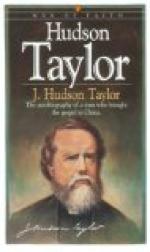* * *
Rest in peace by stately rivers martyred
soldiers of the free,
Rest brave captain, at our threshold,
where the Hudson meets the sea.
Wallace Bruce.
* * *
=Edgewater=, opposite Grant’s Tomb on the west bank, lies between Undercliff on the north and Shadyside on the south. The latter place was made historic by Anthony Wayne’s capture of supplies for the American army in the summer of 1780 which formed the basis of a satirical poem by Major Andre, entitled ="The Cow Chase."=
The steamer is now approaching 129th street, and we turn again with pride to the beautiful tomb of General Grant which fittingly marks one point of a great triangle of fame—the heroic struggle of the American soldiers in 1776, the home of Alexander Hamilton, and the burial place of the greatest soldier of the Civil War.
* * *
Woodman, spare that tree!
Touch not a single bough!
In youth it sheltered me,
And I will protect it now.
George P. Morris.
* * *
=One Hundred and Twenty-Ninth Street to Yonkers.=
This upper landing of the Hudson River Day Line has a beautiful location and is a great convenience to the dwellers of northern Manhattan. On leaving the pier the steel-arched structure of Riverside Drive is seen on the right. The valley here spanned, in the neighborhood of 127th Street, was once known as “Marritje Davids’ Fly,” and the local name for this part of New York above Claremont Heights is still known as “Manhattanville.” The Convent of the Sacred Heart is visible among the trees, and
=Trinity Cemetery’s Monuments= soon gleam along the wooded bank. Among her distinguished dead is the grave of General John A. Dix whose words rang across the land sixty days before the attack on Fort Sumter: “If any man attempts to pull down the American flag shoot him on the spot.” The John A. Dix Post of New York comes hither each Decoration Day and garlands with imposing ceremonies his grave and the graves of their comrades.
Near Carmansville was the home of Audubon, the ornithologist, and the residences above the cemetery are grouped together as Audubon Park. Near at hand is the New York Institute for the Deaf and Dumb, and pleasantly located near the shore the River House once known as West-End Hotel.




